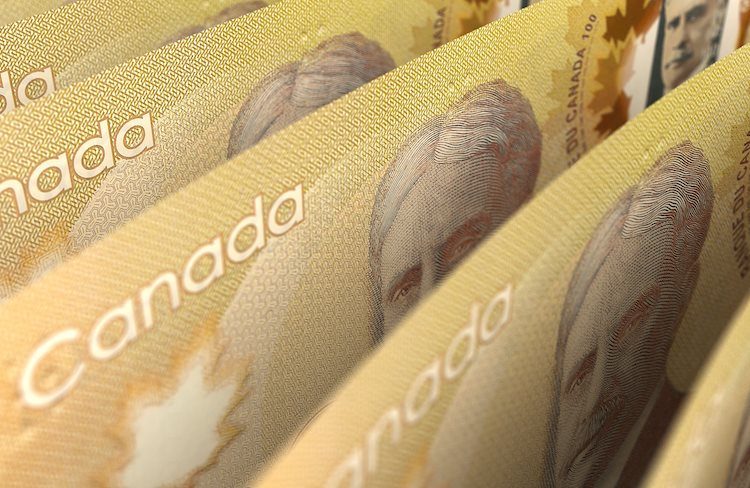- USD/CAD edges higher to near 1.3710 in Thursday’s early Asian session.
- Fed Minutes said a 50 bps rate cut was backed by the majority of officials.
- Lower crude oil prices weigh on the commodity-linked Loonie.
The USD/CAD pair trades with mild gains to around 1.3710 despite the stronger US Dollar (USD) during the early Asian session on Thursday. The rising bets of 25 basis points (bps) by the US Federal Reserve (Fed) in November might provide some support to the pair ahead of the key US Consumer Price Index (CPI) data on Thursday.
The Open Market Committee (FOMC) Minutes from the September meeting released on Wednesday indicated a “substantial majority” of policymakers supported the outsize cut, but also suggested there was robust debate over the decision. However, “some” participants favored only a quarter-point cut, while “a few others” mentioned they could have supported that decision as well.
On Wednesday, Boston Fed President Susan Collins said that with inflation trends growing weaker, it is very probable that the Fed can deliver more interest rate reductions. Meanwhile, Boston Fed President Susan Collins noted, “I saw an initial 50-basis-point rate reduction as prudent in this context, recognizing that monetary policy remains in restrictive territory.”
Investors now see the Fed lowering interest rates by a quarter point in November instead of a jumbo rate cut, followed by a similar move in December. This, in turn, could lift the Greenback against the Canadian Dollar (CAD) in the near term. The markets have priced in nearly an 80% chance of 25 basis points (bps) Fed rate cuts in November, up from 31.1% last week, according to the CME FedWatch Tool.
On the Loonie front, the decline of crude oil prices could exert some selling pressure on the commodity-linked CAD as Canada is the largest oil exporter to the United States. On Friday, traders will take more cues from the Canadian job report for September, including the Unemployment Rate and Net Change in Employment. If the report shows a stronger-than-expected outcome, this could help limit the CAD’s losses.
Canadian Dollar FAQs
The key factors driving the Canadian Dollar (CAD) are the level of interest rates set by the Bank of Canada (BoC), the price of Oil, Canada’s largest export, the health of its economy, inflation and the Trade Balance, which is the difference between the value of Canada’s exports versus its imports. Other factors include market sentiment – whether investors are taking on more risky assets (risk-on) or seeking safe-havens (risk-off) – with risk-on being CAD-positive. As its largest trading partner, the health of the US economy is also a key factor influencing the Canadian Dollar.
The Bank of Canada (BoC) has a significant influence on the Canadian Dollar by setting the level of interest rates that banks can lend to one another. This influences the level of interest rates for everyone. The main goal of the BoC is to maintain inflation at 1-3% by adjusting interest rates up or down. Relatively higher interest rates tend to be positive for the CAD. The Bank of Canada can also use quantitative easing and tightening to influence credit conditions, with the former CAD-negative and the latter CAD-positive.
The price of Oil is a key factor impacting the value of the Canadian Dollar. Petroleum is Canada’s biggest export, so Oil price tends to have an immediate impact on the CAD value. Generally, if Oil price rises CAD also goes up, as aggregate demand for the currency increases. The opposite is the case if the price of Oil falls. Higher Oil prices also tend to result in a greater likelihood of a positive Trade Balance, which is also supportive of the CAD.
While inflation had always traditionally been thought of as a negative factor for a currency since it lowers the value of money, the opposite has actually been the case in modern times with the relaxation of cross-border capital controls. Higher inflation tends to lead central banks to put up interest rates which attracts more capital inflows from global investors seeking a lucrative place to keep their money. This increases demand for the local currency, which in Canada’s case is the Canadian Dollar.
Macroeconomic data releases gauge the health of the economy and can have an impact on the Canadian Dollar. Indicators such as GDP, Manufacturing and Services PMIs, employment, and consumer sentiment surveys can all influence the direction of the CAD. A strong economy is good for the Canadian Dollar. Not only does it attract more foreign investment but it may encourage the Bank of Canada to put up interest rates, leading to a stronger currency. If economic data is weak, however, the CAD is likely to fall.
Read the full article here

